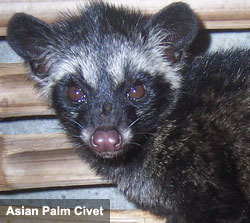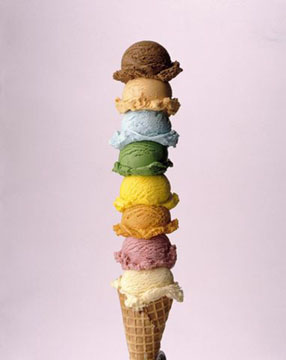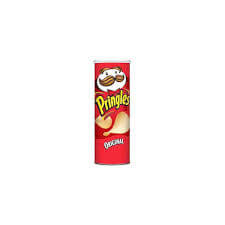Love interesting food facts? Check out this cool book about weird food facts from around the world and throughout history! Or maybe these 250+ trivia facts about vegetables and healthy fruits. You can never have too much trivia!
1. Pringles aren’t really “potato” chips.
Did you know that Pringles only have 42% potato content? The remainder is a combination of wheat starch, flours (potato, corn, and rice) mixed with vegetable oils and an emulsifier. They were originally known as “Pringles Newfangled Potato Chips”, but other snack manufacturers objected, saying Pringles failed to meet the definition of a potato “chip”. The US Food and Drug Administration weighed in on the matter, and in 1975, they ruled Pringles could only use the word “chip” in their product name within the following phrase: “potato chips made from dried potatoes”.[17] Faced with such an unpalatable appellation, Pringles eventually opted to rename their product potato “crisps” instead of chips. However, this later led to other issues in the United Kingdom, where the term potato “crisps” refers to the product Americans call potato “chips.”

2. Iceberg Lettuce is a member of the sunflower family.
The sunflower family is the largest plant family on earth. Some other members of the sunflower family include: artichokes, endives and raddichio. Oh, and you know how Iceberg Lettuce got its name? Growers used to pack it with crushed ice to ship.

3. We eat 900% more broccoli today than we did 20 years ago!
In 1970 the average consumption of Broccoli was half a pound, in a recent survey (1997) the average consumption was found to be four and half pounds. In 1998, 90% of the broccoli grown in the U.S. came from California. Today it is grown in nearly every state, but California is still the top producer.

4. The most expensive coffee in the world comes from civet poop
Kopi Luwak are coffee beans that come from Civet (a cat sized mammal) poo. A civet eats the berries for their fleshy pulp. In its stomach, proteolytic enzymes seep into the beans, making shorter peptides and more free amino acids. Passing through a civet’s intestines the beans are then defecated, keeping their shape. After gathering, thorough washing, sun drying, light roasting and brewing, these beans yield an aromatic coffee with much less bitterness. This coffee was widely noted as the most expensive coffee in the world with prices reaching $160 per pound.

5. Microwave cooking was discovered accidentally, when a chocolate bar melted in someone’s pocket
Percy LeBaron Spencer was an American Engineer and inventor. In 1945, while standing in front of an operating magnetron, a chocolate bar in his pocket melted. He then tested popcorn in front of the magnetron and it quickly popped all over the room. Development of the microwave oven grew out of these observations, and by 1947 a commercial oven was being sold by Raytheon.

The famous Italian explorer Marco Polo discovered the recipe for a dessert called “milk ice” while he was roaming around China. When he brought the recipe back with him, Europeans substituted cream for the milk (Europeans do love their cream) and appropriately called it “ice cream.”

7. Watermelons can cost up to $100 in Japan!
Despite relentless deflation in Japan, watermelons still carry of $100, or sometimes more. For Japanese department stores and special vendors like Senbikiya, luxury fruit belongs to a special product category that exists almost exclusively for givers of gifts. Gift fruit – which can include grapes, cherries, peaches and pears – is cultivated in a special way, different from ordinary, everyday fruit. Many Japanese consider the special melon, like the special grape, cherry or pears, to be the perfect gift, set apart by its aura of luxury and added value from what is otherwise a mass-produced organic product.

8. Natural vanilla is considered to be mildly addictive.
The essential oils of vanilla and vanillin are sometimes used in aromatherapy. In old medicinal literature, vanilla is described as an aphrodisiac and a remedy for fevers; these purported uses have never been scientifically proven. It has been shown that vanilla increases levels of catecholamines (including adrenaline), though, and as such can also be considered mildly addictive.

9. In Tibet, a common drink is butter tea – it is made from yak butter, salt, and tea.
Drinking butter tea is a regular part of Tibetan life. Before work, a Tibetan will typically down several bowlfuls of this beverage, and it is always served to guests. Nomads are said to often drink up to 40 cups of it a day! Since butter is the main ingredient, butter tea is a very warming drink, providing lots of caloric energy and is particularly suited to high altitudes. The butter also helps prevent chapped lips.

Yes, it’s true! Crazy, I know. The calories in food are a measure of energy content. For something we eat to be a source of “negative calories,” it must provide fewer of these units of energy than we expend in consuming it. Celery has 6 calories per 8-inch stalk. Although it’s loaded with latent energy, the amount we are capable of extracting from celery is negligible, thanks to the plant’s cellulose composition.





Karen@NourishWithKaren says
What a fun post. Thanks for sharing!
Jackie Patti says
Is that a microwave in your pocket or are you just happy to see me?
Akar says
Very interesting facts, specially the negative-calories one!